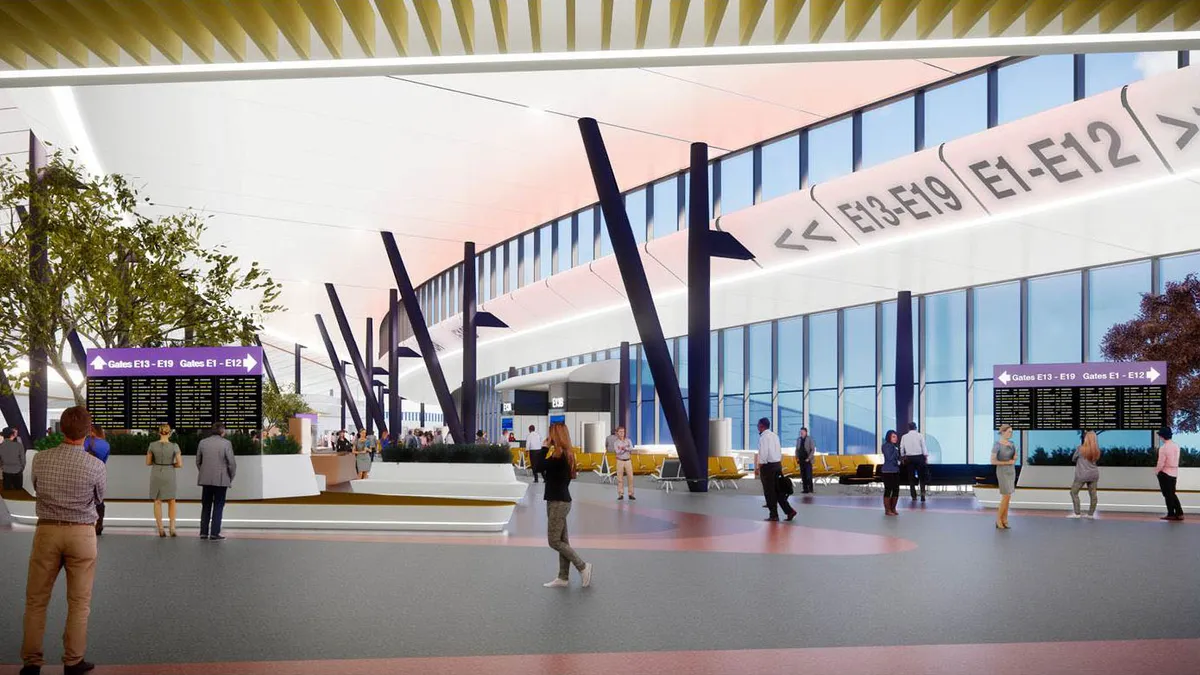Dive Brief:
- Boston Logan International Airport has opened a renovated Terminal E to meet international travel demand, enhance passenger experience, improve operational flexibility and promote sustainability, according to a Nov. 14 news release.
- The modernization of Terminal E, which spans 390,000 square feet of new and shared space, involved the addition of new gates, a central, multistory great hall and renovations to the existing terminal, the release said.
- To achieve energy efficiencies exceeding the standards set in the Massachusetts energy code by at least 20% and minimize the terminal’s carbon footprint, the modernization project included electrification efforts and added exterior insulation, building systems and solar power, said the Massachusetts Port Authority, which owns and manages the airport.
Dive Insight:
Airport terminals across the U.S. average more than 40 years old and face rising maintenance costs and depreciation, intensifying the need to upgrade and replace facilities and equipment, according to the Airports Council International-North America. Estimates from the trade group indicate that U.S. airports will need to spend $151 billion for airport infrastructure maintenance and expansion from 2023 through 2027.
Logan Airport’s $33 million Terminal E expansion was partly funded by a $22.5 million Airport Terminal Program grant from the Federal Aviation Administration. The grant is one of many funded by the bipartisan infrastructure law, which earmarked nearly $1 billion to spur upgrades, renovations, expansions and modernization projects across 99 U.S. airports.
In addition to renovating the existing structure, Terminal E’s improvements include four new aircraft gates and a roughly 320,000 square-foot building with dynamic glass that adapts to the position of the sun to block glares, according to Massachusetts Port Authority, which owns and manages Logan Airport. The terminal’s sweeping red roof offers departing passengers panoramic views of downtown Boston and the city’s skyline, prime consultant and architect AECOM said in its press release. Other key features of the modernization initiative include departure lounges, concessions, international arrivals, improved wayfinding and enhanced ticketing areas as well as a new passenger security checkpoint, airline clubs and baggage systems.
Sustainability initiatives that were part of the expansion include electrification stations, electrochromic and photovoltaic glass, super insulation, solar power, recycled materials, advanced interior and exterior building systems to minimize the facility’s carbon footprint, AECOM said. Terminal E’s sustainability improvements include an energy efficient displacement ventilation system and provide a noise barrier to the nearby East Boston neighborhoods, Massport said.
AECOM noted in its release that the terminal is now seeking LEED Gold certification from the U.S. Green Building Council.












